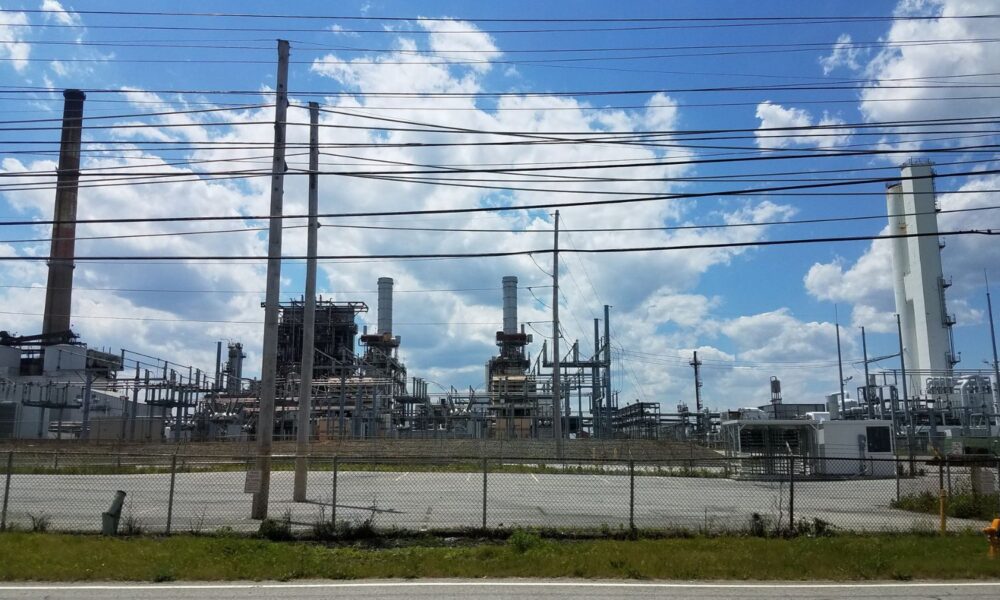A few months ago, I was reviewing the findings of a study my organization, the Union of Concerned Scientists, just concluded on facilities that use ethylene oxide (EtO), a carcinogenic gas, to sterilize medical equipment, spices and dried food, as well as manufacture other chemicals.
I came to a sudden halt when I came across the listing of two spice sterilizing facilities–of four plants located in Maryland–that are only two and a half miles from my house. Alarmed, I spent the following two weeks learning as much as a could about EtO and driving around the Jessup and Hanover plants to try to figure out how far EtO “fugitive emissions” leaking from the buildings could travel. Could my family be affected?
It’s likely our neighborhood was most exposed from the time the neighborhood was developed in 2007 until 2014, when the plants installed scrubbers in their smokestacks. Since then, my husband and I were, at the very least, exposed when we biked through the area around the Hanover plant that the Environmental Protection Agency (EPA) determined exceeded the federal cancer risk threshold.
It turns out that we are among the lucky ones. The plant workers and people living and working within a fifth of a mile of the facilities are most at risk, according to the EPA. Beyond that point, the agency says the emissions start to dissipate. EtO, which is generally at ground level in the air, breaks down by half (in other words, its half-life) in 69 to 149 days.
However, it’s not only the plants that emit EtO that you have to worry about. EtO-sterilized products stored in offsite warehouses can continue to off-gas, or emit, EtO, for a few days after they are sterilized. One of those warehouses is also about 2.5 miles from my neighborhood. Data collected by an air monitor outside a warehouse in Georgia revealed the warehouse released nine times more EtO than released by the plant that sterilized the product.
When my neighbors and I attended a community meeting the EPA held in Jessup earlier this month, my alarm only grew. Agency officials told us that EtO is one of the most dangerous chemicals the agency regulates. There is no safe level. Workers at some of the 96 commercial sterilizers around the country have a 1 in 10 cancer risk based on the EPA’s exposure model.
The agency determined the chemical’s potency back in 2016–finding that it was up to 60 times more toxic than previously understood–but it took a recent lawsuit by Earthjustice for the agency to act.
Nearly 40 people–mostly from predominantly Black and Brown neighborhoods near sterilizer plants–recently traveled to Washington, D.C., to meet with EPA officials about its proposed regulations, which the agency released in May. Their stories were devastating.
- A woman who lives near a plant in Laredo, Texas, which uses a whopping 1.5 million pounds of EtO a year, and her daughter who has leukemia attended the meetings. A Texas health department study found a statistically significant cancer cluster of the types EtO causes, including leukemia, in three census tracks around the plant. The local government and school district now are spending $250,000 to install air monitors in Laredo to collect data on the community’s exposure.
- A grandmother from Salinas, Puerto Rico, who has lived only a few blocks from a plant for 45 years said there have been more than 100 deaths from cancer in their neighborhood. While the plant has promised to install scrubbers to limit EtO emissions from its smokestack, it remains unclear when that will happen. I cannot emphasize enough how astonishing it is that the facility still has not installed these additional control measures.
- A woman from Memphis, Tennessee, who grew up across the street from a sterilizer said just about her entire family has cancer. Many of her husband’s relatives, who grew up in the same neighborhood, also have cancer.
To be sure, it is not easy to regulate EtO, which is exceedingly difficult to contain. Plants in California that have complied with state regulations requiring them to seal off the sterilizer–which the proposed EPA regulations also would require–still emitted harmful EtO levels inside and outside of the plants.
The Food and Drug Administration is trying to identify alternatives to EtO and, in the meantime, insists that medical device sterilization must not be interrupted. But that makes the neighborhoods surrounding these plants, especially the ones created by redlining, sacrifice zones.
In fact, not all medical equipment requires this carcinogenic gas to be adequately sterilized. Just last year, the International Organization for Standardization determined that hydrogen peroxide is a valid EtO substitute. Meanwhile, the European Union has outright banned EtO for sterilizing spices. The United States must follow suit.
The demands made by communities represented by Earthjustice are more than reasonable. They are calling for the new EPA regulations to cover off-site warehouses. Without that requirement, companies will have an incentive to move products from regulated facilities to unregulated sites. They also want the EPA to require fenceline air monitoring around commercial sterilizers, so they know what the plants are emitting. And finally, they want the agency to implement the new regulations more quickly than the proposed 18 months. Residents living near these plants have been subjected to this carcinogenic gas for decades. The sooner they are protected, the better.
The EPA comment period for EtO regulations closes today. Everyone should lend their voice to this fight. Check out UCS’s comment guide on this rule—your comment doesn’t have to be long and can be done in under 10 minutes!

